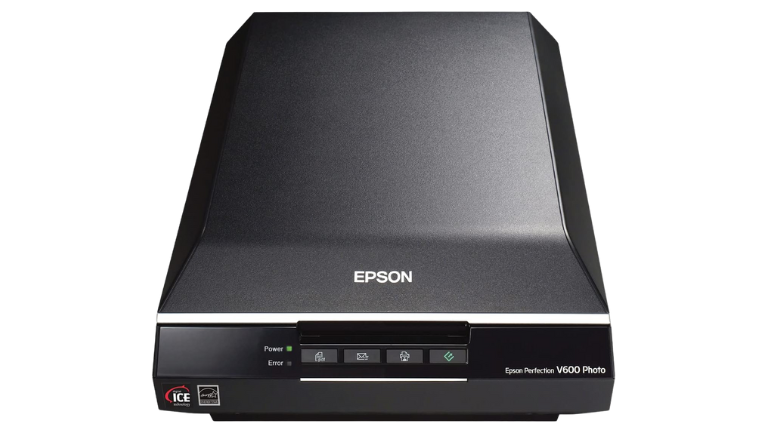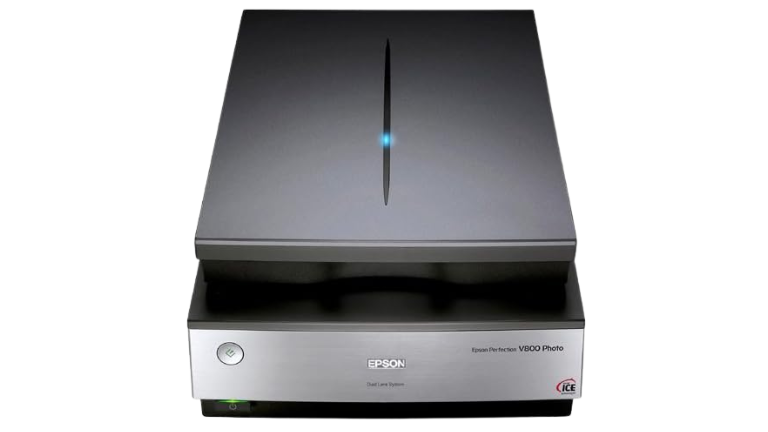Epson V600 vs Epson V800 – Blog
Epson V600 vs Epson V800: The Epson V600 and V800 are two of the most powerful scanners for Color Photo, Image, Film, Negative & Document Scanner.
- Item Weight: 9 Pounds
- Wattage: 16.5 Watts
- Dual Lens System: No
- Date First Available: September 18, 2009
- Dmax: 3.4 Dmax
- Item Weight: 20.9 Pounds
- Wattage: 32 Watts
- Dual Lens System : Yes
- Date First Available: October 30, 2014
- Dmax: Remarkable tonal range – 4.0 Dmax for smooth gradations & fine shadow detail
In this article, we’ll look at the Epson V600 and V800 side by side, contrasting their specs, features, and performance so you can make an educated buying decision.

A brief overview of the key similarities and differences.
Dimension: The Epson V800 is somewhat bigger than the Epson V600, measuring in at 19.8 x 12 x 6 inches compared to 19 x 11 x 4 inches for the V600. Those who are tight on space may want to think about the somewhat larger dimensions.
LED Illumination: LED illumination and 6400×9600 DPI (dots per inch) are standard on both the Epson V800 and V600 printers. Since anyone running either the Windows or Mac operating systems can use these scanners, they appeal to a large audience.
Released Date: In comparison to the Epson V800, which was released in 2014, the Epson V600 first appeared on the market in 2009. Due to its greater age, the V800 model may have benefited from technological developments and upgrades.
Price: The Epson V600 stands out as a more reasonable alternative if cost is a major consideration in your selection. Its low price makes it a viable option for individuals who need reliable scanning without breaking the bank.
Weight: The Epson V800 is one of the larger choices in terms of weight, coming in at 20.9. The Epson V600, on the other hand, weighs in at a much more manageable 9 pounds, which may be helpful in terms of mobility and general handling.
| Epson V600 vs Epson V800 | ||
|---|---|---|
 |  |
|
| Buy on Amazon | Buy on Amazon | |
| Brand | Epson | Epson |
| Resolution | 9600 | 9600 |
| Item Dimensions LxWxH | 19 x 11 x 4.6 Inches | 12.1 x 19.8 x 6 Inches |
| Item Weight | 9 Pounds | 20.9 Pounds |
| Wattage (D) | 16.5 Watts | 23 Watts |
| Dual Lens System |  |  |
| Connectivity Technology | USB | USB |
| Date First Available (D) | September 18, 2009 | October 30, 2014 |
| Dmax | 3.4 Dmax | 4.0 Dmax |
Most Popular Questions About: Epson V600 vs Epson V800
Epson V600 vs Epson V800 Reddit Answers
1. Since prints require far less equipment than negatives do, the v600 should be enough. No more information can be extracted than what is printed, and since most prints will be large enough, the v600 won’t be the bottleneck.
My v800 is definitely too much for most prints, according to the scans I did of certain prints. Dust and scratches are removed, but the images themselves are hazy since the cameras, films, and prints from more than a century ago were not initially very crisp.
————————————————-
2. Currently, I suppose I would just take the medium format work to be professionally done if I’m not satisfied with the quality of the v600 rather than shell out the extra $900 for an updated scanner. I believe that’s the path I would take if I did dig anything bigger up later. Or try scanning with a DSLR.
I formerly had an Epson V600. To generate basic prints and maintain a digital library for reference (my main workflow is still printing in the darkroom), it allowed me to scan negatives perfectly. To manage 4×5, I had to upgrade to the V850. Large variations in quality exist between formats. When zooming in, a 2400 dpi scan of a 35mm neg on the V600 failed; with the V850, I can see much more detail. Although I’m not experienced with DSLR scanning, the v850 is definitely the greatest flatbed scanner available.


